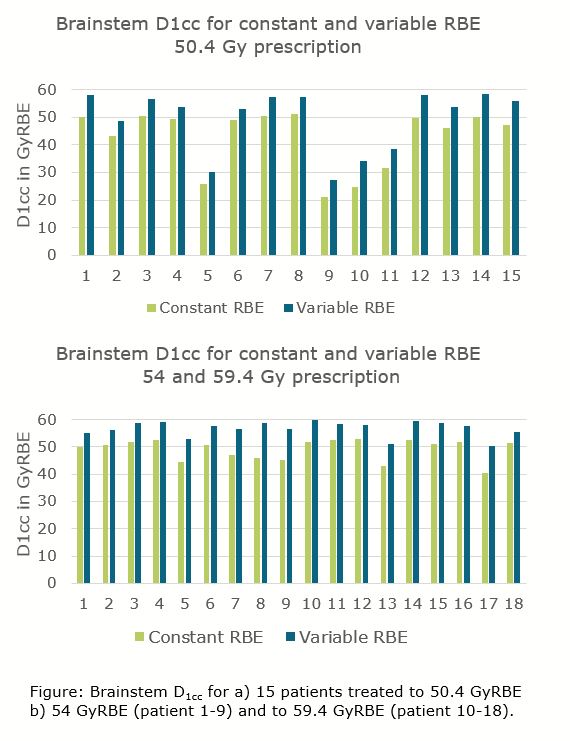Evaluation of proton PBS treatment planning guidelines for brain tumours using a variable RBE model
Anne Vestergaard,
Denmark
PO-1501
Abstract
Evaluation of proton PBS treatment planning guidelines for brain tumours using a variable RBE model
Authors: Anne Vestergaard1, Jesper Kallehauge1, Peter Lægdsmand2, Klaus Seiersen1, Bob Smulders1,3, Petra Witt Nyström1, Yasmin Lassen-Ramshad1, Morten Høyer1, Ole Nørrevang1, Stine Korreman1
1Aarhus University Hospital, Danish Centre for Particle Therapy, Aarhus, Denmark; 2Aarhus University Hospital, Danish Centre for Particle Therapy, Aarhus N, Denmark; 3Rigshospitalet, Department of Oncology, Copenhagen, Denmark
Show Affiliations
Hide Affiliations
Purpose or Objective
Brain
tumour patients have been treated with proton therapy for decades, and more
recently with Pencil Beam Scanning (PBS). Proton treatment planning often uses
planning guidelines to avoid high Linear Energy Transfer (LET) and thereby high
variable Radiobiological Effect (RBE) in high-risk organs, especially in the
brainstem.
The aim of this study was
to evaluate the safety of clinically applied planning guidelines with respect
to brainstem doses, when taking into account a variable RBE model.
Material and Methods
15
consecutive brain tumour patients treated with proton therapy to 50.4 GyRBE and
with brainstem near-max ≥ 40 Gy, and 18 patients treated to 54 or 59.4 GyRBE with
brainstem near-max ≥ 52.5 GyRBE were included. All patients were planned
according to in-house treatment planning guidelines. For patients with tumours
close to the brainstem treated to a prescribed dose ≥ 54 GyRBE, the local
guidelines imply that only one out of minimum three fields was allowed with
distal edge in the brainstem. For patients with a prescribed dose below 54
GyRBE, there are no guidelines explicitly regarding the distal edge, as the RBE
effects are not expected to be clinically relevant.
Results
The figure shows D1cc and D1cc,var
of the brainstem for all 33 patients. The median and inter quartile range of D1cc,
var was
53.9 GyRBE (43.5;57.4) for the 50.4 GyRBE group and 57.6 GyRBE (55.7;58.6) for
the 54-59.4 GyRBE group. None of the patients had a D1cc,var
of
more than 60 GyRBEvar.

Conclusion
The presented clinical guidelines are considered
acceptable, given the uncertainties in RBE models. In particular, the McNamara
model has been shown to overestimate max doses for high LET values and low α/β
(Rørvik et
al 2018 Phys.
Med. Biol.). The difference between the D1cc and D1cc,var was larger for the 50.4 Gy
patients than expected. Guidelines have been updated to aim at Brainstem D1cc less than the prescribed
dose for patients treated to doses below 54 GyRBE, where the distal edge rule is
not routinely applied. Further studies are needed to explore the validity of
the RBE models and to evaluate other high risk organ doses.